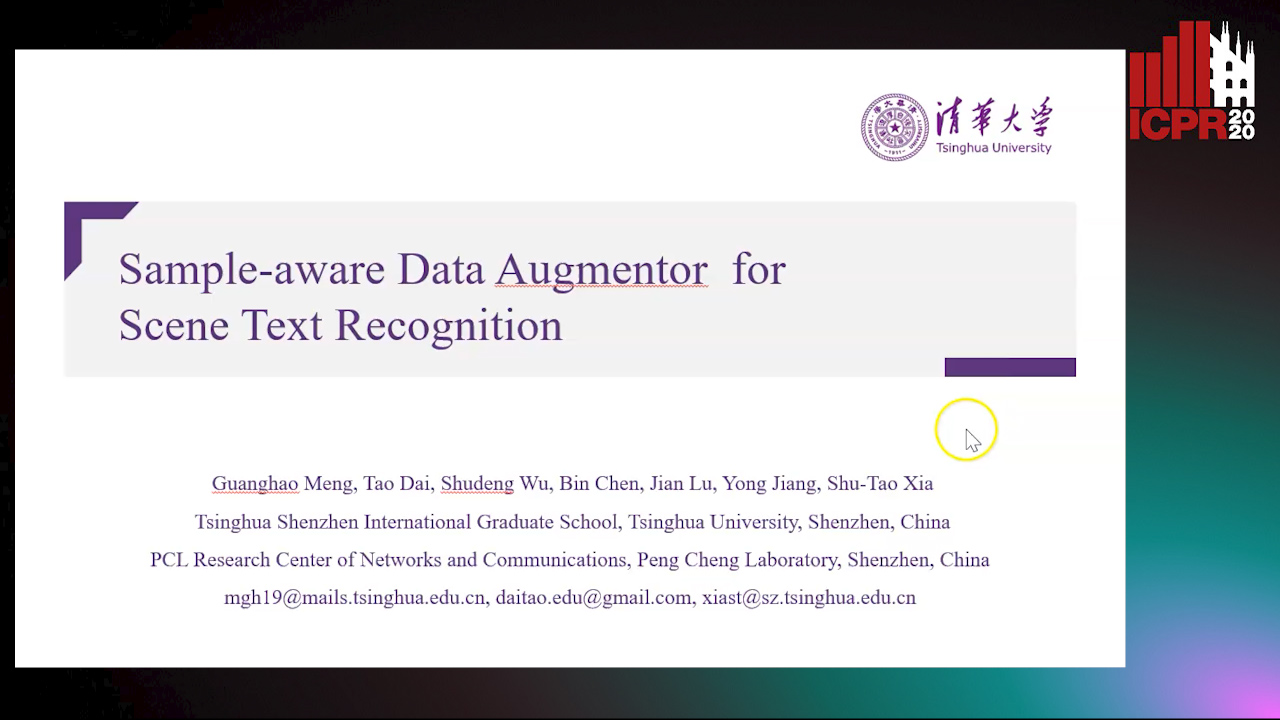Tao Dai
Papers from this author
Progressive Splitting and Upscaling Structure for Super-Resolution

Auto-TLDR; PSUS: Progressive and Upscaling Layer for Single Image Super-Resolution
Abstract Slides Poster Similar
Sample-Aware Data Augmentor for Scene Text Recognition
Guanghao Meng, Tao Dai, Shudeng Wu, Bin Chen, Jian Lu, Yong Jiang, Shutao Xia

Auto-TLDR; Sample-Aware Data Augmentation for Scene Text Recognition
Abstract Slides Poster Similar
Transferable Adversarial Attacks for Deep Scene Text Detection
Shudeng Wu, Tao Dai, Guanghao Meng, Bin Chen, Jian Lu, Shutao Xia

Auto-TLDR; Robustness of DNN-based STD methods against Adversarial Attacks